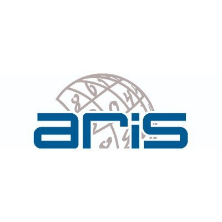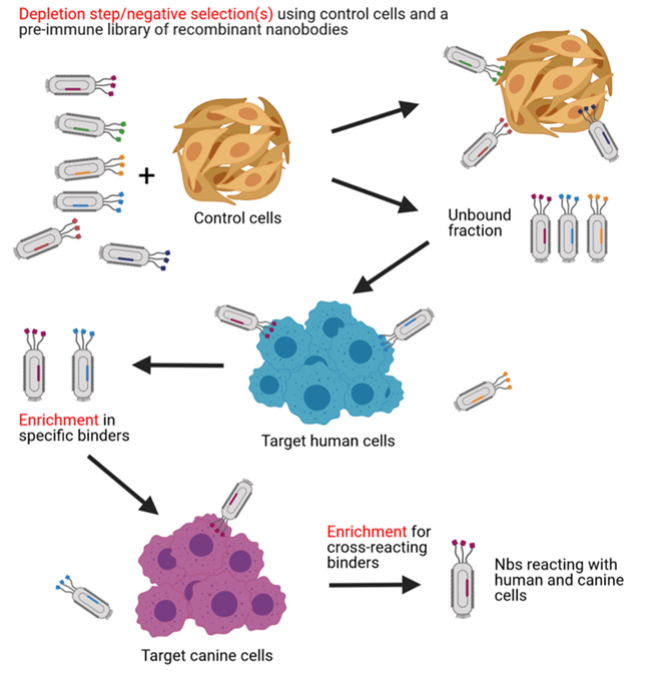Comparative oncology for tackling rare cancers
Coordinator of the program: University of Nova Gorica, contact person: prof. dr. Ario de Marco: https://cris.cobiss.net/ecris/si/sl/researcher/35787
This multidisciplinary project relies on the complementary expertise of researchers working in three major areas:
- Biotechnology - Laboratory for Environmental and Life Sciences/University of Nova Gorica (UNG - Ario de Marco, Urša Štrancar, Claudia D’Ercole, Xinyu Hu
- Animal Oncology - Veterinary Faculty/University of Ljubljana (VFL - Nataša Tozon, Tanja Švara, Tanja Plavec, Martina Krofič Zel, Kristina Tekavec, Anja Lisjak, Tanya Birk)
- Human Oncology - Department of Experimental Oncology/National Institute for Oncology (OI - Maja Čemažar, Špela Kos, Katarina Žnidar, Urša Lampreht Tratar, Tim Božič)
Topic and Objectives
The research of the biological mechanisms involved in the development of rare diseases is often slowed down or even impaired by the difficulty to access to samples. The same reasons make objectively difficult to develop effective medicaments. In the case of rare cancers, such situation can be overcome by involving both human and canine patients affected by very similar or even the same pathology. This is possible because dogs suffer of spontaneous tumors with characteristics very similar to those of humans. Furthermore, some cancer types that are extremely rare in humans may be relatively frequent in dogs. This circumstance simplifies the access to biological samples and may accelerate the identification of therapeutic options that could be beneficial for both patient groups because some ex vivo/in vivo steps are easier to test. Synergism is maximized when it is possible to develop reagents that recognize human and canine isoforms of the same molecular targets. For instance, it means the isolation of recombinant antibodies useful for imaging and that can be used in both patient pools, allowing direct comparison of their efficacy in the two species. This is a win/win approach in which animals and humans are partners in the fight for access to better therapies.
The overall goal of the proposal is to demonstrate the feasibility and utility of a human-canine Comparative Oncology program for biological understanding and development of effective treatment of rare cancers, using mucosal melanoma as the main model. The project has the opportunity to contribute to the establishment of a multidisciplinary research structure that has no equivalent in Slovenia and only few pioneering examples in Europe, despite having been successfully established in the US [https://ccr.cancer.gov/Comparative-Oncology-Program; Canine Comparative Oncology and Genomics Consortium (CCOGC) - www.ccogc.org]. The challenge is to coordinate groups with very different backgrounds and operational organization and to reach a common language to understand the expectations, shortcomings and resources of each member. Schematically, UNG will identify useful biomarkers in human and canine cell lines provided by colleagues from OI and develop immunoreagents suitable for high-resolution tumor visualization and target drug delivery on human and canine cells. These reagents will be validated on the animal patients by the colleagues at VF UL and on human biological samples by the colleagues at OI. The program will provide a unique multidisciplinary training to a generation of young researchers who will have the opportunity to overcome the limitations of a too specialized education and take advantage of the synergistic opportunities of vertical research development ranging from biochemistry to surgery.
Results
The selection and preparation of human and canine cell lines necessary for the screening at UNG has been completed at OI. Both a master cell bank and a working cell bank are now available. In the meanwhile, Nbs for known tumor biomarkers have been isolated, produced fused to different tags and finally systematically tested in immunohistochemistry and flow cytometry in comparison with commercial IgG antibodies. Specifically, a set of fluorescent proteins has been evaluated to identify the ones with most suitable characteristics in terms of stability and yields. Bispecific constructs were optimized in terms of linker features and nanobody-antigen complexes were isolated by native electrophoresis to identify the most stabilizing conditions. We also explored innovative expression conditions, different approaches for in silico rational maturation of nanobodies and looked for the reliability of new biomarkers. Furthermore, alternative scaffolds were assessed with the goal to produce binders possessing epitopes with geometries complementary to those offered by nanobodies. Also the possibility to use extracellular vesicles for delivering imaging dyes was considered and we set a system for their immunopurification. This capacity will be explored for specifically isolate tumor-derived extracellular vesicles to exploit their tropism towards tumors in vivo. Recently, we started characterizing nanobodies isolated by direct panning on tumor cells.
Publications
de Marco A (2025) Recent advances in recombinant production of soluble proteins in E. coli. Microb Cell Factories 24:21
Waheed Y, Mojumdar A, Shafiq M, de Marco A, De March M (2024) The fork remodeler Helicase-like Transcription Factor in cancer development: all at once. BBA - Molecular Basis of Disease. BBA Mol Basis Dis 1870:167280
Štrancar A, D’Ercole C, Nakić M, Cikatricisova L, De March M, de Marco A (2024) A practical guide for the quality evaluation of fluobodies/chromobodies. Biomolecules 14:587
Wang J, Kang G, Lu H, de Marco A, Yuan H, Feng Z, Gao M, Wang X, Wang H, Zhang X, Wang Y, Zhang M, Wang P, Feng Y, Liu Z, Cao X, Huang H (2024) Novel Bispecific Nanobody Mitigates Experimental Intestinal Inflammation in Mice by Targeting TNF-α and IL-23p19 Bioactivities. Clinic Translat Med 14:e1636
D’Ercole C, de Marco A (2023) Native agarose gels and contact blotting as means to optimize the protocols for the formation of antigen–ligand complexes. Bioengineering 10:1111
D’Ercole C, De March M, Veggiani G, Oloketuyi S, Svigelj R, de Marco A (2023) Biological applications of synthetic binders isolated from a conceptually new Adhiron library. Biomolecules 13:1533
Li J, Kang G, Wang J, Yuan H, Wu Y, Meng S, Wang P, Zhang M, Wang Y, Feng Y, Huang H, de Marco A (2023) Affinity maturation of antibody fragments: A review encompassing the development from random approaches to computational rational optimization. Int J Biol Macromol 247:125733
Neumair J, D’Ercole C, De March M, Elsner M, Seidel M, de Marco A (2023) Macroporous epoxy-based monoliths functionalized with anti-CD63nanobodies for effective isolation of extracellular vesicles in urine. Int J Mol Sci 24:6131
Poggianella M, Bernedo R, Oloketuyi S, de Marco A (2023) Nanobodies selectively binding to the idiotype of a Dengue virus neutralizing antibody do not necessarily mimic the viral epitope. Biomolecules 13:551
Bai Z, Wang J, Li J, Yuan H, Wang P, Zhang M, Feng Y, Cao X, Cao X, Kang G, de Marco A*, Huang H* (2023) Design of nanobody-based bispecific constructs by in silico affinity maturation and umbrella sampling simulations. Computational Structural Biotechnol J 21:601-613


